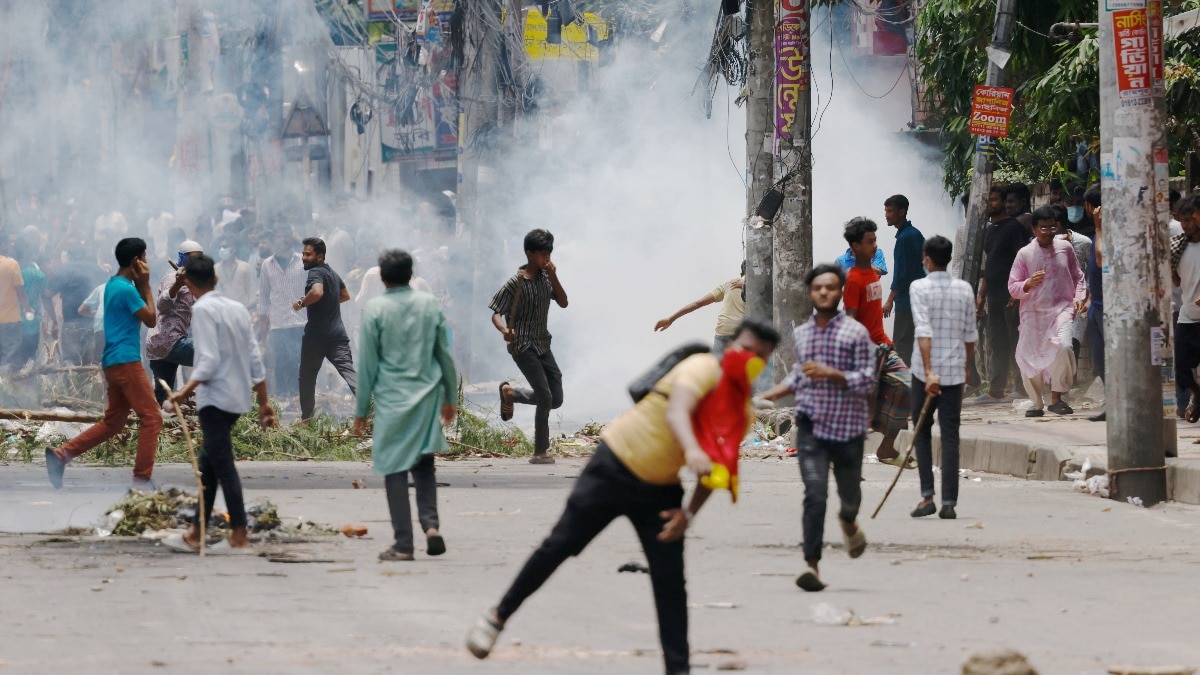2024-08-07 12:31:47
Bangladesh is burning, fuelled by rising unemployment and low living wages. Resentment among the people was further instigated by a jobs quota policy, which led to massive riots and Prime Minister Sheikh Hasina fleeing the country on August 5. While the 30 per cent quota in jobs for descendants of freedom fighters was the final straw, the populace of the country has been simmering for years due to soaring youth unemployment and low minimum wage.
Workers in Bangladesh get the lowest minimum wage in the world, except some countries like Burundi and Rwanda. While the average minimum wage of 110 countries was US$ 791 in 2022, the minimum wage in Bangladesh was only US$ 45 on the basis of purchasing power parity (PPP), according to the International Labour Organization.
Bangladesh is the third-largest supplier of garments in the world, next only to China and the European Union. The bulk of the garment industry is based in and around Dhaka. A report by Anker Research Institute in 2023 showed that an average household in Dhaka earned Bangladeshi taka 16,450 in 2016 while family living expenses were 25,990 taka. In 2023, net living wage rose to 25,462 taka (about Rs 18,200) but the family expenses too rose to 40,228 taka (approx Rs 28,800) and the gap of 37 per cent remained the same. The trend across the satellite cities of Dhaka is the same.
Notably, 16 apparel and footwear companies, including Adidas, Puma, Gap and Levi Strauss wrote a letter to erstwhile Prime Minister Sheikh Hasina to urgently take action regarding minimum wage in Bangladesh on October 11, 2023 . “The consultations should seek to raise the minimum wage to a level that corresponds with a wage level and benefits that are sufficient to cover workers’ basic needs and some discretionary income and take into account inflationary pressures,” they wrote.
“We note that the average monthly net wages for garment workers in Bangladesh has not been adjusted since 2019, while inflation has increased significantly over that time. We continue to recommend that the government of Bangladesh adopt an annual minimum wage review mechanism to keep up with changing macroeconomic factors,” they added.
Last year, garment workers and their unions had demanded an increase in minimum wage from 8,000 taka (Rs 5,700) to 23,000 taka (Rs 16,400). The minimum wage in Bangladesh had remained at 8,000 taka since 2018 — which fell below the World Bank Poverty Line for a two- to three-person household in 2022, according to the Fair Labor Association. However, the government’s wage board, which largely comprises garment factory owners, proposed a minimum wage of 10,400 taka (Rs 7,400), half of what was demanded. This led to widespread protests in October and November last year.
Though the Bangladesh Minimum Wage Board established the garment sector’s updated minimum wage as 12,500 taka, equivalent to $113 (or about Rs 8,900) in December 2023. However, it did not do much to assuage the anger of the people as they found the increase in wages paltry compared to living expenses.
Besides low wages, commoners in Bangladesh have been reeling under severe stress from sky-high inflation. Inflation rose from 5.5 per cent in 2021 to 7.7 per cent in 2022 and a whopping 9.9 per cent in 2023. To add to their woes, the youth unemployment rate has been hovering at more than 15 per cent since 2020.
Tune In
Bangladesh, Bangladesh unrest, Bangladesh news, Bangladesh update, Bangladesh violence update, low wages in Bangladesh, Bangladesh minimum wage, unemployment in Bangladesh, Bangladesh jobs quota, Sheikh Hasina, Khaleda Zia,
Source link
![]()
